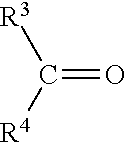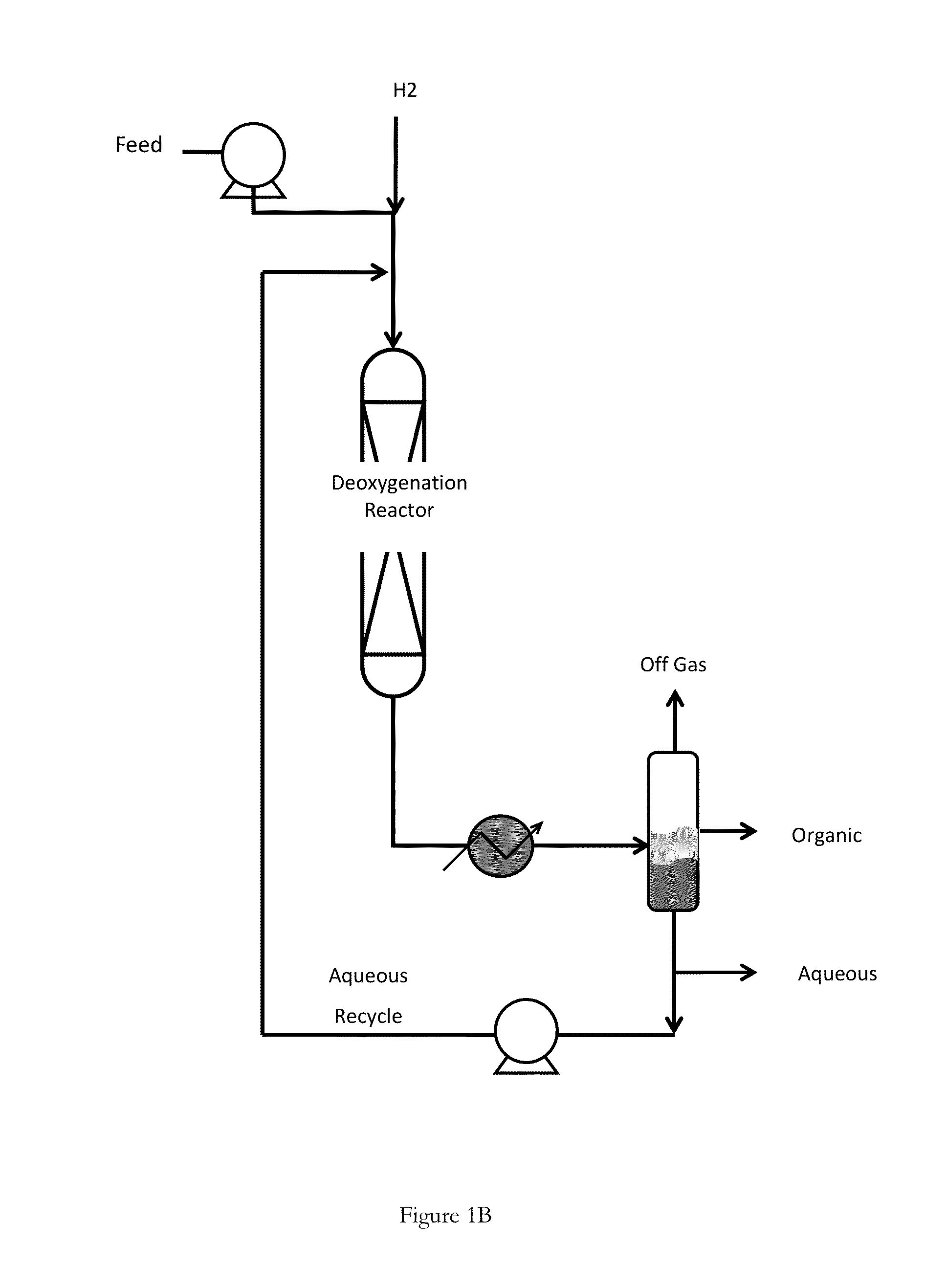Processes for Converting Biomass-Derived Feedstocks to Chemicals and Liquid Fuels
a technology of biomass-derived feedstocks and conversion processes, which is applied in the preparation of heterocyclic compounds, ether preparations, and ether preparations by compound dehydration, etc., can solve the problems of severely restricting the conversion of biomass to thermochemical, biochemical, and catalytic effects of biomass, and few cost-effective processes exis
- Summary
- Abstract
- Description
- Claims
- Application Information
AI Technical Summary
Benefits of technology
Problems solved by technology
Method used
Image
Examples
example a
[0108]Table 1 provides ash component analyses for five feedstock sugar compositions.
TABLE 1Ash component analyses for five feedstocksCommercialCommercialfermentation42 DE#11 rawCommercialExemplarygrade glucoserefined corncane#5hydrolysatecorn syrupsyrupsugarsugarRESULT (PPM of total solids)Al324B24Bant50Ca34744825653Cu74Fe3210K92193729626Mg733579944Mn20104Na22024523817P50154173790S35246279416Si52641440Zn930
example b
[0109]Table 2 provides ash component analysis for five samples having reduced ash levels. The results in Table 2 indicate the attainment of low sulfur and phosphorus levels. This suggests that these exemplary samples will exhibit a low tendency to foul or poison catalyst employed in the conversion processes.
TABLE 2Ash component analyses for exemplary feedstocksSampleSampleSampleSampleSampleSampleSample1234568RESULT (PPM of total solids)AlntntntntBBantCa21992CuFe23KMg344MnNa555558698PS45
example c
[0110]Three deoxygenation catalysts (palladium-molybdenum-tin, palladium-ruthenium, and palladium-silver, all on tungstated zirconia supports) were tested to determine the impact of feedstock concentration on deoxygenation catalyst performance, specifically in the conversion of a glucose solution to monooxygenates (e.g., alcohols and ketones). Before the feedstock was introduced, each of the catalysts were reduced using hydrogen at a space velocity of 700 hr−1, a 2 hour temperature gradient to 320° C., followed by a 1 hour hydrogen soak. A shell-in-tube reactor system as described in U.S. Pat. No. 7,767,867 to Cortright, which is incorporated herein by reference, was used under the following conditions: a reactor outlet temperature of 270° C.; a reactor pressure of 1050 psig; and a liquid hour space velocity (LHSV) of 2 mL feed per mL catalyst per hour. The hydrogen was provided at a minimum H2 / carbon molar ratio of 2.
[0111]FIG. 2 illustrates the relationship between monooxygenates ...
PUM
| Property | Measurement | Unit |
|---|---|---|
| Fraction | aaaaa | aaaaa |
| Fraction | aaaaa | aaaaa |
| Fraction | aaaaa | aaaaa |
Abstract
Description
Claims
Application Information
 Login to View More
Login to View More - R&D
- Intellectual Property
- Life Sciences
- Materials
- Tech Scout
- Unparalleled Data Quality
- Higher Quality Content
- 60% Fewer Hallucinations
Browse by: Latest US Patents, China's latest patents, Technical Efficacy Thesaurus, Application Domain, Technology Topic, Popular Technical Reports.
© 2025 PatSnap. All rights reserved.Legal|Privacy policy|Modern Slavery Act Transparency Statement|Sitemap|About US| Contact US: help@patsnap.com



